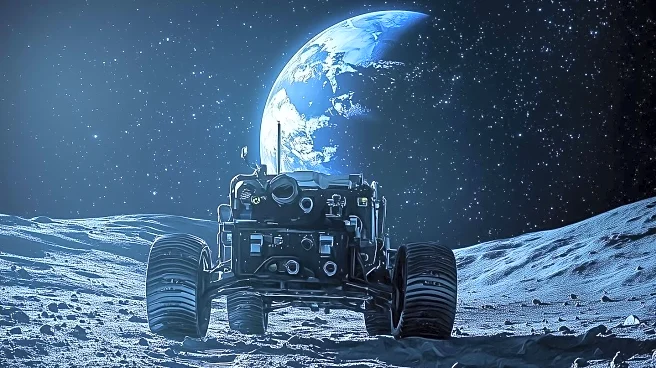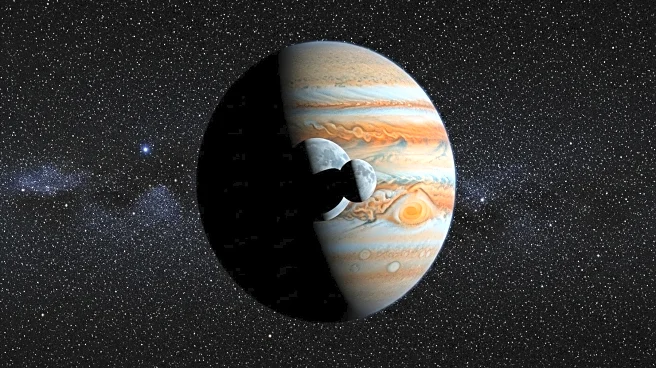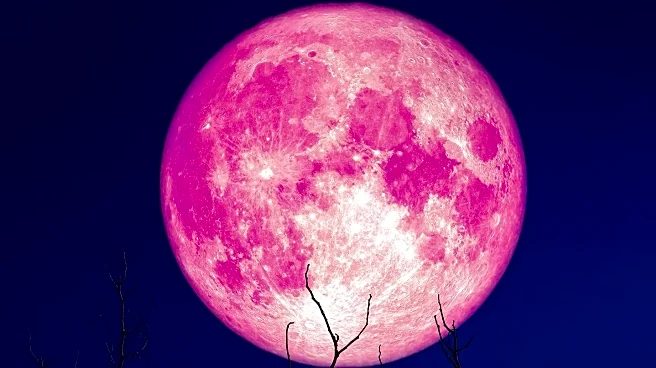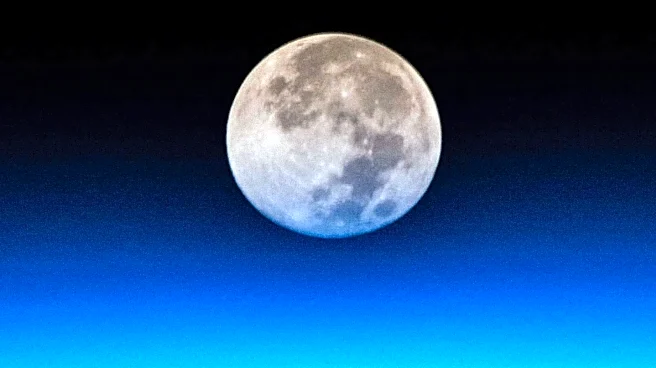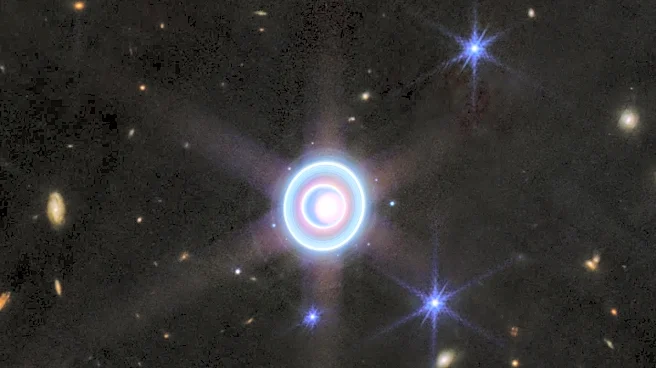What is the story about?
What's Happening?
The first supermoon of 2025 will rise on October 6, providing a spectacular view as it dominates the night sky. Known as the Harvest Moon, this supermoon occurs when the moon is closest to Earth, making it appear larger and brighter than usual. The moon will rise around sunset and reach peak illumination at 11:47 p.m. ET. This event offers a unique opportunity for skywatchers to observe the moon's features without the need for magnification devices, although photography enthusiasts may wish to capture memorable images.
Why It's Important?
The Harvest Moon's occurrence as a supermoon provides a unique opportunity for public engagement with astronomy. The increased brightness and size of the moon can spark interest in celestial phenomena and encourage educational activities related to space science. This event also highlights the cultural significance of the Harvest Moon, which has traditionally been associated with agricultural practices and seasonal changes. The widespread visibility of the supermoon can foster community gatherings and promote social interaction centered around natural events.
What's Next?
Following the Harvest Moon, skywatchers can anticipate two more supermoons before the year's end, including the Beaver Moon in November and the Cold Moon in December. These events will continue to offer opportunities for observation and photography. The National Weather Service predicts clear skies for most of the U.S., providing optimal viewing conditions. As the moon continues its cycle, enthusiasts are encouraged to observe its changes over time, enhancing their understanding of lunar phases and celestial dynamics.
Beyond the Headlines
The Harvest Moon's cultural significance extends beyond its astronomical features, representing a time of harvest and preparation for winter. This event underscores the importance of preserving dark skies for astronomical observation, as light pollution can hinder the ability to view celestial events. Efforts to reduce light pollution can benefit both the environment and the scientific community, promoting sustainable practices and enhancing the quality of life.
AI Generated Content
Do you find this article useful?


